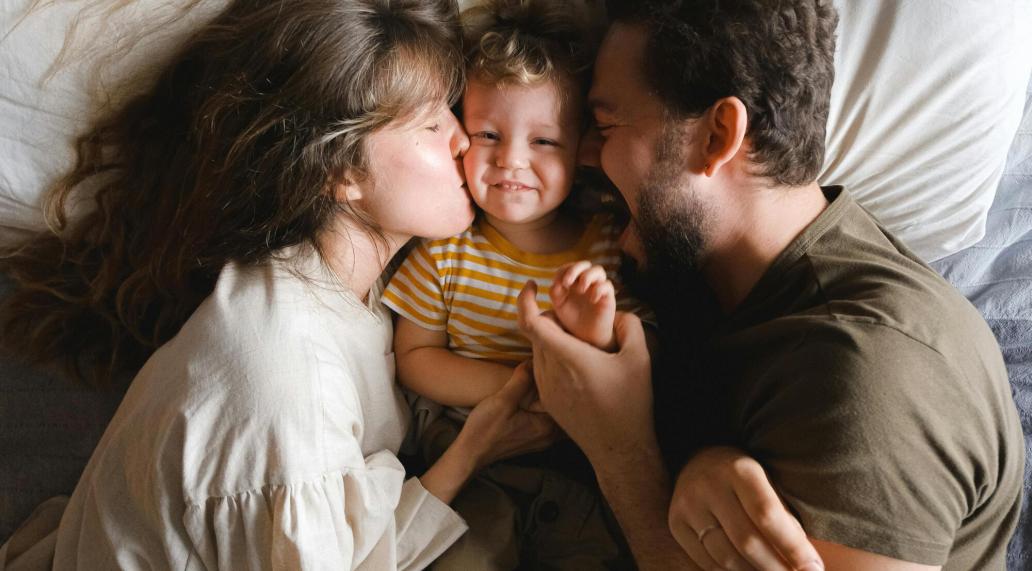
The bond between parents and child forms the foundation for a child's life and is currently the focus of scientific and societal discussions. Our understanding of attachment has significantly changed over the decades. What is clear: A secure attachment enables a child to develop trust in themselves and their environment. This security encourages them to explore their surroundings and develop their abilities. In this article, we shed light on what constitutes attachment, how it can be fostered, and take a look at historical practices that seem astonishing from today's perspective.
Historical Approach to the Parent-Child Bond
Children are the most developmentally needy beings on earth and heavily dependent on the closeness, care, and attention of their caregivers. All the more alien does the former stance appear that physical closeness between mother and child was unnecessary or even harmful. In the first half of the 20th century, it was common practice to separate newborns from their mothers immediately after birth and place them in infant wards. The mother was supposed to recuperate over several weeks, and visits with the child were limited to one to two hours a day - only with the doctors' approval. Breastfeeding was often discouraged for hygienic reasons.
Today we know that this separation contradicts the fundamental needs of a baby. Closeness, physical contact, and loving communication are essential to build a secure attachment - the foundation for healthy development.
What makes a secure attachment?
Attachment is the emotional bond between parents and their child. More specifically, it is a behavioral system responsible for ensuring that the primary caregiver stays with the child, providing protection and learning support.
A secure attachment is not only crucial for early childhood development but also has long-term effects on emotional intelligence and social skills later in life. Children with secure attachments are likely to develop the ability to form stable relationships as adults and handle stress and conflicts more confidently. In contrast, children who did not experience secure attachment have a higher risk of developing developmental delays or even disorders.
A secure attachment is formed through the reliable response of caregivers to the child's needs, especially for protection and closeness. This requires caregivers who respond empathetically to the child and can adopt the child's perspective—and a large measure of patience! Fortunately, nature has prepared us for the fact that parents and situations are not perfect. Studies show that already a responsive reaction in about 70 percent of situations is sufficient to enable secure attachment. Parents can therefore trust that children possess a lot of resilience and adaptability. A secure attachment also does not mean that the child always feels good and has no negative emotions. What counts is that there is a fundamental trust that in times of need, the child can rely on the caregivers.
Bonding is a lifelong process
The bond between parents and their child changes with age and varies accordingly. While a crying baby requires an immediate response, a clarifying conversation with a teenager can also be postponed to the evening.
Even if a secure attachment is lacking in early childhood, it does not mean it cannot be developed later. Supportive relationships with others - such as friendships, partnerships, or caregivers - can have a compensating effect. Parents who reflect on and work through their own childhood experiences often create new foundations for a loving bond with their child.
Disruptive factors
The following factors can disrupt the development of a secure attachment between parent and child:
The lack of stable caregivers, for example in institutional care
Neglect of emotional needs or abuse
Unprocessed childhood traumas of the parents that can affect their bond with their own child.
Parents can recognize such disruptive factors by reflecting on their child's emotional needs. With support through counseling or therapy, burdensome patterns can often be broken and new bonding experiences can be created.
Conclusion: Attachment means trust, not perfection
The development of a secure attachment is not a matter of perfection, but a process characterized by emotional availability and care. Even if everything is not ideal, the foundation for a healthy attachment remains as long as the child feels accepted and loved.
Book recommendations:
Bonding Without Burnout (Nora Imlau), Beltz Verlag, 2024
Attachment - A Secure Base for Life: The Big Parenting Book for the First 6 Years (Fabienne Becker-Stoll), Kösel-Verlag, 2018
Growing in Connection (Marina Hoffmann Julia Wanitschek & Junita Horch), Advent-Verlag, 2022


